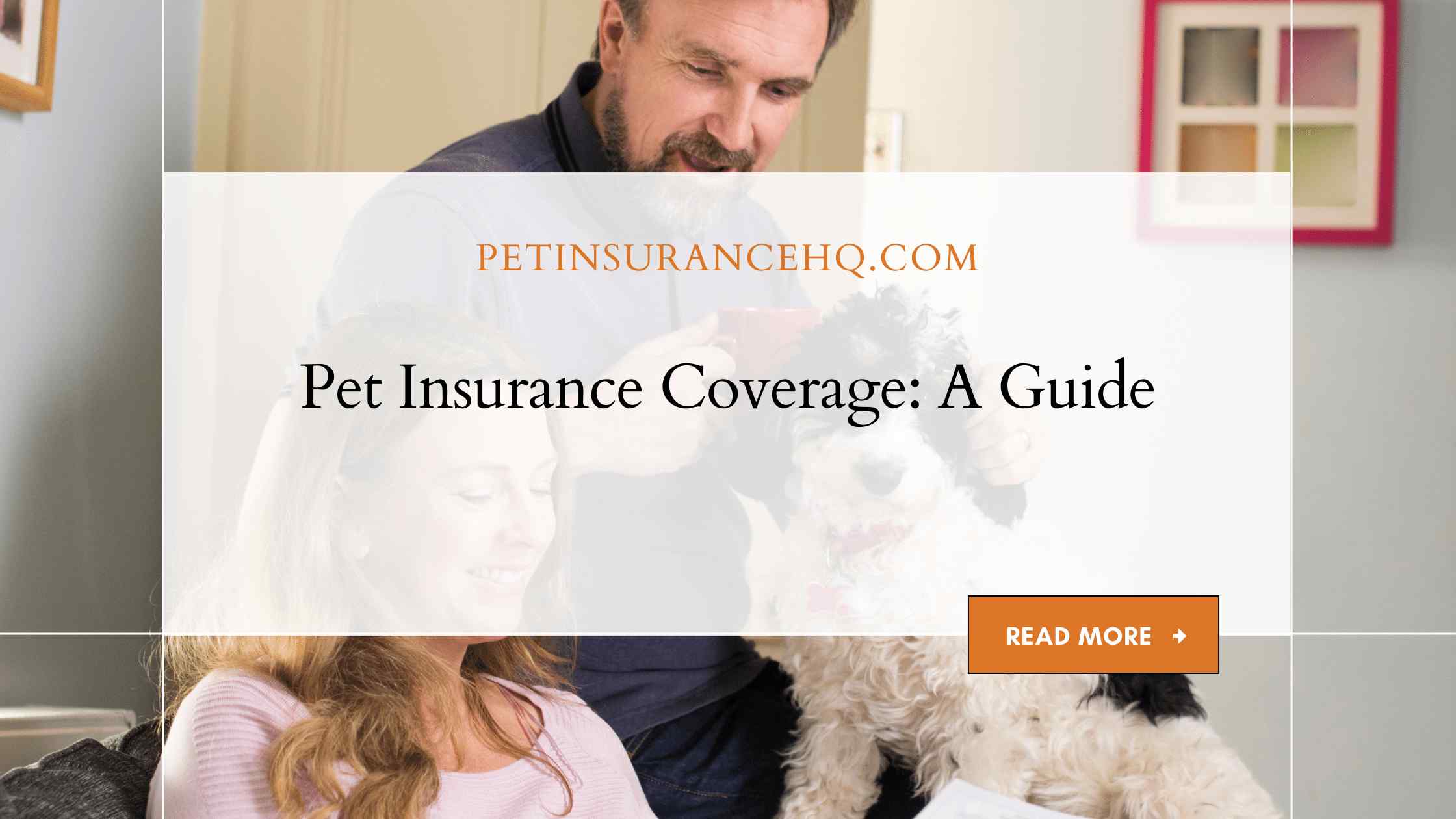What Does Pet Insurance Cover? A Comprehensive Guide
Pets are more than just animals—they’re furry members of our families. And just like with human loved ones, we want to make sure our pets receive the best possible medical care when they need it. That’s where pet insurance comes in handy! But what exactly does pet insurance cover?
In this comprehensive guide, we’ll explore the ins and outs of pet insurance coverage so you can make an informed decision on how to protect your fuzzy friends’ health and well-being. From routine check-ups to unexpected emergencies, let’s take a closer look at what types of treatments and services are typically included in pet insurance policies.
Introduction to Pet Insurance
Insurance for our furry friends has come a long way in recent years, and more pet owners are turning to pet insurance to help offset the cost of unexpected veterinary bills. But what does pet insurance actually cover?
In this comprehensive guide, we’ll take a look at what pet insurance covers, as well as some of the things you need to keep in mind when shopping for a policy.
Most pet insurance policies will cover accidents and illnesses, as well as routine care like vaccinations and preventive care. Some policies will also cover additional costs like boarding or grooming.
When it comes to accidents and illnesses, it’s important to remember that not all conditions are covered by pet insurance. For example, pre-existing conditions are typically excluded from coverage.
It’s also worth noting that there is usually a deductible associated with pet insurance policies. This is the amount you’ll need to pay out-of-pocket before your coverage kicks in. Deductibles can range from $50 to $1,000, depending on the policy.
It’s important to read the fine print when it comes to pet insurance policies. Some insurers have age limits for coverage, while others exclude certain breeds of dogs or cats. Be sure to understand all the exclusions and limitations before signing up for a policy.
What Does Pet Insurance Typically Cover?
When it comes to pet insurance, there are a lot of options out there. And while some people may think that insurance is a waste of money, the truth is that it can be a lifesaver – both emotionally and financially. So, what does pet insurance typically cover?
Most pet insurance policies will cover accidents and injuries. This means that if your pet is hit by a car or gets into a fight with another animal, your vet bills will be covered up to a certain amount. Some policies will also cover illnesses, though this coverage may be subject to a deductible or co-pay.
Preventative care, like vaccinations and routine check-ups, is usually not covered by pet insurance. However, some companies do offer wellness plans that will cover these types of services.
Ultimately, it’s important to read the fine print of any policy before you purchase it. That way, you’ll know exactly what is – and isn’t – covered.
The Pros and Cons of Pet Insurance
When it comes to pet insurance, there are a lot of factors to consider. Is it worth the cost? What does it cover? How much will it pay out?
There are two main types of pet insurance: accident and illness coverage, and wellness or preventative care coverage. Accident and illness coverage will protect your pet if they are injured or become sick, while wellness coverage will help to offset the costs of routine care, like vaccinations and check-ups.
There are a few things to keep in mind when considering pet insurance. First, you’ll want to make sure that the policy covers anything that is important to you. Second, you’ll want to compare costs between different policies to make sure you’re getting the best deal. You’ll want to read the fine print carefully so that you understand exactly what is and isn’t covered.
Here are a few of the pros and cons of pet insurance:
Pros:
- Helps offset the cost of unexpected medical bills
- Gives peace of mind in knowing that your pet is protected financially if they become sick or injured
- Some policies cover routine care expenses like vaccinations and check-ups
Cons:
- Monthly premiums can be expensive
- Deductibles can be high
- Some procedures may not be covered
How to Choose the Right Plan for Your Pet

There are a lot of factors to consider when purchasing pet insurance, and it can be tricky to decide which plan is right for your pet. Here are a few things to keep in mind when choosing a pet insurance plan:
- Consider your pet’s age, breed, and health history. Some plans may not cover certain conditions that are more common in certain breeds or older animals.
- Decide what kind of coverage you need. There are three main types of pet insurance: accident only, comprehensive, and wellness. Accident only plans are the most basic and only cover unexpected accidents or injuries. Comprehensive plans cover both accidents and illnesses. Wellness plans provide preventive care coverage in addition to accidents and illnesses.
- Compare prices and features of different plans. Make sure to compare the deductibles, co-pays, reimbursement rates, and coverage limits of different pet insurance companies before making a decision.
- Read the fine print. It’s important to understand exactly what is and isn’t covered by your chosen plan before you sign up. Pay attention to exclusions and limitations so you know what you’re getting into.
Common Exclusions
There are some common exclusions that are typically found in pet insurance policies. These can include things like hereditary and congenital conditions, pre-existing conditions, routine care and preventive care, beauty treatments, and elective procedures. Some policies may also exclude certain breeds of animals or pets that are considered to be high risk.
Questions to Ask When Comparing Plans
When it comes to pet insurance, there are a lot of factors to consider. To help you make the best decision for your pet, we’ve compiled a list of important questions to ask when comparing plans:
- Does the plan cover pre-existing conditions?
- How much does the plan cover for routine care?
- What is the deductible?
- Are there any limits on coverage?
- What is the reimbursement level?
- Does the plan cover preventive care?
- Does the plan cover accidents and illnesses?
- What is not covered by the plan?
Tips for Getting the Most Out of Your Plan
As a pet parent, you want to do everything you can to keep your furry friend healthy and happy. Having pet insurance is one way to help ensure your pet gets the care they need, when they need it. But what does pet insurance cover? And how can you make sure you’re getting the most out of your plan?
Here are some tips for getting the most out of your pet insurance plan:
- Know what’s covered. Every pet insurance plan is different, so it’s important to know exactly what yours covers. Read the fine print and ask your insurer any questions you have about coverage.
- Make sure your vet is in-network. In order to get the most bang for your buck, be sure to take your pet to an in-network vet that accepts your particular insurance plan.
- Keep up with preventive care. Most plans will cover at least some preventive care, so be sure to take advantage of things like routine check-ups and vaccinations. Not only will this help keep your pet healthy, but it could also save you money down the road by catching problems early on.
- Use all of your benefits. Some plans come with extra perks like discounts on things like food and toys – so be sure to take advantage of those!
- Keep good records. Be sure to keep all of your receipts and paperwork organized in case you need to file a claim later on down the road .
Following these tips and doing your research should help you get the most out of your pet insurance plan. Being prepared for the unexpected can give you peace of mind, knowing that if something does happen to your furry friend, you’ll be able to give them the care they need.
Conclusion
Pet insurance can be a valuable tool for protecting your pet’s health and wellbeing. It provides coverage for medical bills, preventive care, vaccinations and other services that might otherwise strain your budget. With the right insurer, it can also offer peace of mind in knowing that you are doing everything possible to safeguard the well-being of your beloved pet. Whether or not you decide to get pet insurance is ultimately up to you but with this comprehensive guide as a reference, we hope you have gained clarity on what exactly pet insurance covers so that you can make an informed decision on what is best for your furry friend!






